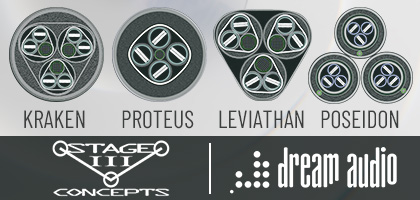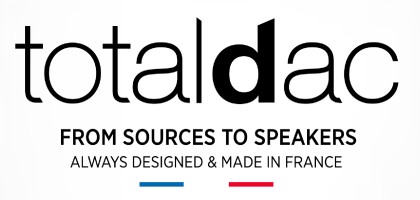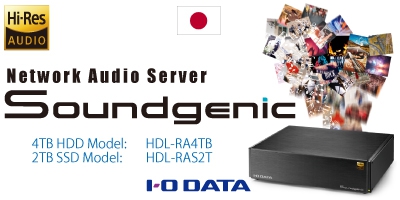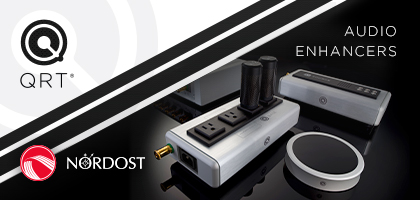No. 239 April 2024
- COVER REVIEW: Muarah MT-3 & MY-1/9 ⸜ turntable & tonearm » POLAND
- KRAKOW SONIC SOCIETY ⸜ meeting № 145: POLSKIE NAGRANIA (Polish Recordings label) on SACD, with Damian Lipiński onboard » POLAND/Kraków
- REVIEW: Carbide Audio CARBIDE BASE ⸜ anti-vibration feet » USA
- REVIEW: Fezz Audio EQUINOX EVO ⸜ digital-to-analog converter » POLAND
- REVIEW: Marton OPUSCULUM OMNI V1.0 ⸜ integrated amplifier » POLAND
- REVIEW: Norma Audio Electronics REVO IPA-80 ⸜ integrated amplifier » ITALY
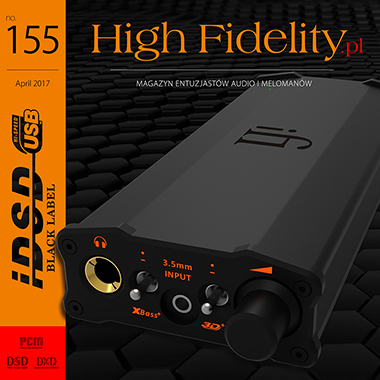

|

|
|
Digital technology in the world of analogue 
TechDAS Air Force One turntable in „High Fidelity” review – the purest form of analogue
By coincident, due to trend, DJs, a collapse of the market for the sale of other physical media, there are probably even more reasons, among them a persistence in LP manufacturing by audiophile labels - this medium is trending nowadays, praised by celebrities and kids. Last year, in many countries, including Great Britain, the numbers of sold vinyl records was bigger than the one of CDs. It's still just a fraction of what's happening on the web, ie music that is streamed, purchased, and exchanged in form of digital files. Still, when it comes to influencing the imagination, vinyl rules. In the second decade of the 21st century, the music lover, fan - whatever we call it - has three main types of media to choose from: files (either streamed or played from local memory), CDs and LPs. To me the latter seems particularly interesting. Automatically associated with "analogue" it is something other than in the early 1970s. Because does really "vinyl" automatically equals "analog"? - It is clear that it is not so. Most of currently pressed LPs are created from digital files. What exactly does analogue mean? The Long Play and 7" 45 rpm single are analogue medium. This means that the signal is stored on them in a continuous manner, "analogous" to the source signal. Analog tape recorders work in similar way - both reel-to-reel and cassette ( Compact Cassette ) ones. Before the incision of acetate, which is the first step in the production of the LP disc, the signal does not have to be analog, but may also be digital. This signal just before being fed to a cutting lathe is converted to analogue in a digital-to-analog converter, just like in any CD or file player. 
Dirk Sommer, chief editor of hifiststement.net magazine, has also his own record label - Sommelier Du Son – releasing only “purely” analogue AAA recordings. This photo was taken during Krakow Sonic Society #94, Kraków 2014 In this way, vast majority of currently sold records are made. Almost all current releases have been recorded using digital technology, and so mixed and mastered. Originally they were intended for streaming and sale in the form of digital files, and not so much as CD (not to mention SACD). So what is vinyl record today? It seems to be sort of a hybrid that is different from the vinyls made pre-1971. By purchasing a release of Music on Vinyl , Back to Black, or any other large record label one can be almost 100% sure that one gets is an analog representation of a digital file; Poland it will be the Polskie Nagrania, and among small labels for example the GAD Records. The reasons for this state of affairs are simple and there are not so many of them: it is mostly the transition of almost all recording studios to digital technology (in Poland we still have some analogue ones such as: OBUH Records and Custom 34), and on the other hand a convenience for companies pressing records. Using analogue tapes involves a lot more work. The digital signal allows you to automate and often to optimize the operation of the cutting lathe. Besides, who would like to lose time to ship tapes, rewind them (they are stored in such way so that they are rolled to the end, which reduces the copying of the signal from one layer to another), and then precisely cutting the acetate ... 
Box The Doors released by Rhino included discs pressed from a digital material 24/192 (2007) We do not like it which is a natural reaction for perfectionists. But the manufacturers and producers however, point out the advantages of what we get listening to vinyl cut from a file compared to the same material played from a CD or a file (not to mention MP3). For example - a resolution. Today acetate is cut from high-resolution files, usually 24/48 and 24/96, but often - for example The Doors box released by Rhino – from a 24/192 file (more about this project HERE). Japanese record labels, in turn, often rely on digital DSD files, especially in the case of recordings of classical and jazz music. In Europe, this type of records, but rather as a curiosity, were prepared by Stockfisch. In this way, what we get is an analog representation of a hi-res file. Secondly, vinyl releases over the years, often to this day, were considered a not important addition to the main offer, ie CDs and files. With their mastering, the signal was not compressed and the band was not adjusted so that the record would sound good on small earphones, which is still a common practice. A mastering engineer was not pressured by the studio or label to get a certain type of sound so in fact he could create a better sounding version for vinyl release. And although theoretically it was the same material as on the digital media, it sounded better, more dynamic and tuneful. Maybe not in each and every case but quite often it was so. Sometimes it is still a different story. Jacek Gawłowski, for example, once told me that for the Aga Zaryan album Remembering Nina & Abbey the label decided that the vinyl version should be bit brighter, its sound should be faster and more direct than on a CD. In this way they added to this release a new artistic dimension – what we get on CD and vinyl are ultimately two different versions of the same material. A digital analogue 
One of the best LP labels today is the Dutch company Music on Vinyl. For their records they use only digital files – image presents one of their releases (on the right) and an AAA release by Audio Fidelity. In any case the vinyl records cut from a digital file do not sound the same as those cut from an analogue tape. There is consensus among collectors that only first-press releases really matter, and if possible ones from analog sources. However, the problem of contemporary music fan is availability, price and technical condition of such records. All these three elements are interrelated and affect the price of a disc that can reach several thousand dollars, and in the case of super rare releases even much more. Not everyone can afford them. And what about all the recordings that were made in digital form, that is almost 100% of those released after, say, 1995? Well, these by definition, are the "hybrids" I mentioned earlier (do not confuse them with the SACD / CD hybrids), ie the source is a digital signal and the medium we play music from is a vinyl record. Recordings of this type by collectors, some music lovers and audiophiles are often neglected and considered "second grade" ones. Often wrongly. Paradoxically, digital recording of sound was initiated by audio fanatics who wanted to circumvent the restrictions - so they were seen at the time – of analogue tape recorders, such as low dynamics (about 70 dB), non-linearity, distortion, and above all, noise. How strongly it was believed that the elimination of these problems was the key to sound improvement, can be attested by Jerry Bruck, sound engineer, describing the 1976 summer session of the Santa Fe Opera performing The Mother of Us All? with Virgil Thomson's music and Gertrude Stein's text. This was the first time in USA when music was recorded in digital PCM form: Before the actual session Tom Stockham (Dr. Thomas G. Stockham, Jr. - ed.) contacted me and asked if I would agree for him to bring a prototype of the Soundstream digital recorder and record the sound in parallel with my (analog - ed.) recording. I immediately said yes, and Tom with his assistant installed the equipment in the (Santa Fe) Armory room, where the signal would be sent from my multi-channel mixing console. Now, years later we know that not everything was as wonderful as it seemed, and the technical aspects of the signal being recorded this way were better than what listening to it suggested. Still, the world was already on its way to digital recordings. Pioneers But it was not the debut of this technology. The Pulse Code Modulation digital system was invented in the 1930s in the US Bell Labs. During the World War II it was used to encode transmission sent via cable placed at the bottom of the Atlantic Ocean connecting the United Kingdom and the United States. The system, developed at Bell Labs, was named SYGSALY and has been deployed for use in 1943. Before these developments could be used for music industry we had to wait until 1967 and to find out what happened then we have to go to Japan. This is where the engineers from the national network NHK's Technical Research Laboratory developed a working prototype of a PCM digital recorder, and already in 1969 they had a functioning two-channel recorder. The system worked with 32 kHz sampling rate and 13 bit words. Spool video tape was used to record the signal. This idea, to use of a video recorder with a special adapter, survived until the mid-1990s, and the most famous system was the U-matic (models 1600/1610/1630), developed by Sony, using ¾ "VCR tapes. 
The first LP record using digitally recorded material, Steve Marcus + Jiro Inagaki & Soul Media Something of 1971 |
The first company, that took a serious interest in this invention was Nippon Columbia, known to us as Denon. This is a special case of genuine need to minimize distortion and getting as close to a live event as possible. It was Denon that pioneered direct-to-disc recording technique. This company's engineers recognized a potential in PCM recording and already in 1969 they borrowed the NHK prototype stereo recorder. Over the next two years they made several trial recordings and suggested significant improvements. And Denon is the author of the first commercially available PCM recordings released on LPs: Something by Steve Marcus + Jiro Inagaki & Soul Media, which was out in January 1971 (Nippon Columbia NCB-7003). Based on these experiences, Denon has developed its own converter that allowed them to record PCM signal on a video tape (in the space for black and white colors). The eight-channel DN-023 system was sampled at 47.25 kHz and the word length was 13 bits. The system used a 4-head Hitachi video recorder. The rest of the world needed more time to develop their recorders. The developed by the Soundstream recording system was used by, small at the time, Telarc record label, that as the first in the USA in 1978 released a vinyl record with a digitally recorded material. It was Stravinsky: Firebird & Borodin: Polovtsian Dances performed by Atlanta Symphony and Chorus conducted by Robert Show (Telarc 80039). The improved Dr Stockham's system offered eight channels of 16-bit recording with a sampling rate of 50 kHz. 
The first digital recording, although released on vinyl, that was awarded Grammy (1979) – the Copland's Appalachian Spring While the first Nippon Columbia digital recorders, as well as the Soundstream's system, were stereophonic and therefore limited to jazz and classic recording, the US 3M giant decided to focus on multi-track recordings that in analog recording for years were the basis of rock music. Initially, however, it was still a stereo recorder called Sound80, used to record (as a backup) the Copland's Appalachian Spring in 1978. For an unclear reason a digital version was ultimately used to produce this release. In 1979 this album won a Grammy Award and it was the first digital recording ever to receive this award. Bit by bit The 3M system used a video recorder and a 1" tape run at a speed of 45 inches / second. The sample rate was 50 kHz, same as of the second improved version of Soundstream system, and the words were 16 bits long. At the same time, Denon engineers effort were concentrated on the same goal – higher bit-depth, They already prepared the DN-034R (1978) system, with an eight-track recorder with a sampling rate of 47.25 kHz and a 14-bit word length which together with preemphasis gave the equivalent of a 15.5 bits resolution. Another proof that this was a path to follow for other manufacturers was delivered by the Decca system. Their engineers in 1978 presented a modified IVC recorder, with a 2'' video tape, with electronics developed by them. The system used 18 bit resolution and 48 kHz sampling rate. From today's point of view, the resolution and sampling rate of all these recorders - NHK, Denon, Soundstream / Telarc, 3M and Decca - is ridiculous. Even CDs (let me remind you: 16 bits, 44.1 kHz) later utilized 18, 20, and finally 24-bit recordings, and today's race after maximum resolution of D/A converters took us to the levels of up to 2x DXD (768 kHz / 32 Bits) and Quad DSD, ie 12 MHz sampling frequency. However, if you had a chance to listen to some of the LPs released by the labels in the 1970s and 1980s, then you would understand what I mean by saying that never again have the LPs prepared using digital recordings sounded so good. 
Although the material for Yuri Tashiro Piano Trio, Eiji Arai & The Beat Sounds Digital Explosion album was recorded with 14 bit signal it sounds remarkably well! Do you remember a presentation prepared for Polish Audio Video Show 2016 by Nautilus, or Grzesiek Wyka to be specific? It was no coincident that I spent more time there than in any other place which resulted in awarding it with the Best Sound • Audio Video Show 2016 Award. Grzesiek played the Yuri Tashiro Piano Trio, Eiji Arai & The Beat Sounds, Digital Explosion (East World EWJ-80181, 1980) record. The material for this album was digitally recorded using Optonica system of 1979. Optonica was then used by the Sharp, the brand under which it offered consumer audio equipment. But its logo can be also found on the RX-1 (PCM Digital Audio Adapter) recorder developed by this company. Like all other, except for the Soundstream, digital recording systems at the time, it was based on a video transport and the PCM converter developed for it. Unlike other manufacturers, who opted for high quality but very large reel-to-reel recorders, Optonica was able to work with any cassette recorder. RX-1 offered a recording with a sampling frequency of 44,056 kHz and a 14-bit word length. This guaranteed a 90 dB dynamic range with 0.03% distortion. Analogue in digital era Although the signal was recorded on a semi-professional video recorder, although there were only 14 bits available, that the A/D converters were absolutely primitive, the Digital Explosion album sounds remarkably. One could point out problems with treble resolution, but only if one compares it to the best analog recordings, such as released by Three Blind Mice. But the dynamics, the bass extension and the coherence of all elements that translate into a real musical event makes it very special. Were LPs released today to sound this way I would be very happy about it. However, the reality is different - most of the black discs currently being released sound, at best, only correctly. Why? To answer this question we have to go back to the beginning of digital recordings. Do you remember what I said about who built the recorders and later used them? - people obsessed with sound quality, and I mean a “positive” obsession. They were engineers who have dedicated to use their talents to create something they thought was important, such as minimizing the problems of contemporary recording techniques. They also used the highest quality equipment at their disposal, including powerful reel-to-reel recorders. And the art of acetate cutting for LPs was then at an extremely high level. 
At the very core of a high quality pressing is a high quality signal. But equally important is a proper cutting of the acetate, and to do that some test pressings are prepared – on the photo you can see a test pressing for the AIDAN BAKER & IDKLANG In The Red Room, released by KarlRecords (KR021); review HERE Today the situation is quite different. Vinyl records are a kind of "folklore" for big labels, a temporary trend that allows them to make extra profits. And that's OK, I have nothing against making money, it wouldn't be possible to do anything without money. The problem is the approach to this matter. In short, a large portion of new releases are produced without any specific to the vinyl knowledge. Often, CD quality files are used, and sometimes even mp3 files converted into CD quality. Such a releases makes absolutely no sense. 
1972, Denon system with DN-023R converter allowing PCM signal recording – on the right there is a video recorder However, even if the label sends a high resolution file to the pressing plant, there is no control over the acetate cutting. Most companies do not even order test pressings, considering that a waste of money. The more respect we owe to those who do it, and if they are as tiny as the KarlRecords, and yet they ask for two, sometimes even three test pressings, I am truly impressed and grateful! Audio Video Show 2017 – and invitation to a workshop I hope you can understand now, that not all the vinyl records using digital source material are the same. I know some albums of this kind that sound much better than many AAA ones, and yet most of them offer poor quality. So now I would like to invite you already for a workshop that I will lead together with the Krakow Sonic Society during the Audio Video Show 2017. There is still plenty of time, but you may now book an hour to meet us and listen to the various albums with a digitally recorded signal, to compare modern digital and analog remasters, and to listen to top AAA releases. We are preparing workshops with Nautilus and Ayon Audio. During the presentation I will collaborate with Gerhard Hirt, a member of the Krakow Sonic Society. It was one evening, and in the other I wanted to talk to you about why the material that comes out of the mastering studio changes when the CD is pumped and what they do with it to prevent its degradation. Comparing Master CD-Rs with regular CDs, we'll see what the Japanese "inventions" like Platinum SHM-CD and BSCD2 offer. I cordially invite all of you! WOJCIECH PACUŁA |
About Us |
We cooperate |
Patrons |
|
Our reviewers regularly contribute to “Enjoy the Music.com”, “Positive-Feedback.com”, “HiFiStatement.net” and “Hi-Fi Choice & Home Cinema. Edycja Polska” . "High Fidelity" is a monthly magazine dedicated to high quality sound. It has been published since May 1st, 2004. Up until October 2008, the magazine was called "High Fidelity OnLine", but since November 2008 it has been registered under the new title. "High Fidelity" is an online magazine, i.e. it is only published on the web. For the last few years it has been published both in Polish and in English. Thanks to our English section, the magazine has now a worldwide reach - statistics show that we have readers from almost every country in the world. Once a year, we prepare a printed edition of one of reviews published online. This unique, limited collector's edition is given to the visitors of the Audio Show in Warsaw, Poland, held in November of each year. For years, "High Fidelity" has been cooperating with other audio magazines, including “Enjoy the Music.com” and “Positive-Feedback.com” in the U.S. and “HiFiStatement.net” in Germany. Our reviews have also been published by “6moons.com”. You can contact any of our contributors by clicking his email address on our CONTACT page. |




 |
     |
main page | archive | contact | kts
© 2009 HighFidelity, design by PikselStudio,
projektowanie stron www: Indecity



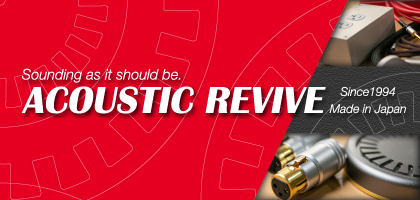
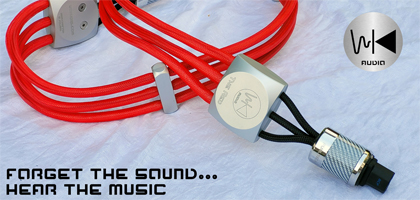
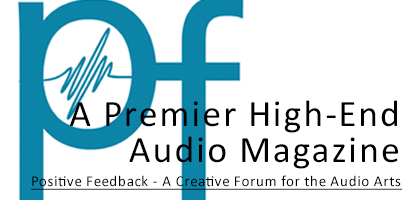
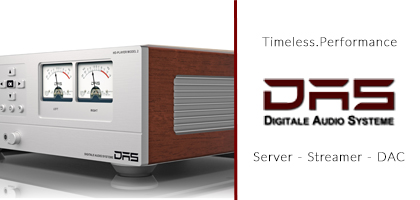
 s people, we are inclined to accept the technologies that surround us as contemporary ones. That means they are contemporary in the sense, that they are accompanying us, but we also gladly accept that they are "new". In this case I am talking about the technique of digital audio coding. Immersed in zeros and ones we do not seem to remember that it is a technique that is less than a hundred years old. So it's just a little younger than something that for years has been considered by the mainstream media to be a vintage medium - a vinyl record.
s people, we are inclined to accept the technologies that surround us as contemporary ones. That means they are contemporary in the sense, that they are accompanying us, but we also gladly accept that they are "new". In this case I am talking about the technique of digital audio coding. Immersed in zeros and ones we do not seem to remember that it is a technique that is less than a hundred years old. So it's just a little younger than something that for years has been considered by the mainstream media to be a vintage medium - a vinyl record.